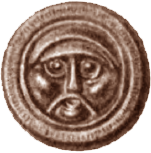Would you be surprised if I told you that Shakespeare’s Hamlet is written from a prototype from 400 years earlier? The story line was borrowed from Saxo Grammaticus, a Danish historian who wrote the Gesta Danorum, which was a piece of work that told of the Danes from mythical times and their legendary and valiant history. The King of Denmark, Horwendil, was given permission by Rorik to marry his daughter Gurutha. Together they had a son named Amleth. The main character Amleth pretends to be mad when he discovers that his uncle, Feng, killed his father, the viking King of Jutland, to take the Jutish throne. Through the course of the legend, we find stark similarities to Shakespeare’s Hamlet, with the exception of the ending. Amleth does not die from a poisonous cut, but succeeds to the throne and eventually dies in battle at the hands of the new Danish king.

Another major difference between Hamlet and the original story written by Saxo is the role of women. Two prominent women in Saxo’s version are given little recognition “namely, proto-Gertrude and proto-Ophelia, have no voice of their own; ‘Ophelia’ does not even have a name” (“The Original Hamlet”). This may be due to the patriarchal nature of the time period. Further, it is understandable that Shakespeare creates names and voices for these women as they will be characters in a play.

Shakespeare’s Hamlet has many character counterparts with regards to Saxo’s version beyond the main characters seen above. A resourceful table can aid in seeing the counterparts — linked here.

As far as anyone knows, Saxo Grammaticus was the first person to write the Hamlet story. There are no earlier records of this story line, but there is evidence that Saxo may have also borrowed some things for his work from various other sources. Saxo fails to understand some Danish puns which leads to an absurd interpretation and results in the version in Gesta Danorum. For this reason, it is thought that Saxo did not create portions of his work, however, it is not known if the entire story was borrowed or only various parts. Another consideration is that in view of Saxo possibly having drawn from various sources, scholars believe that Gesta Danorum could be a retelling of an oral legend that might naturally have variations in different parts of the story.

Hamlet’s grandfather, Rorik, is a historical figure in Denmark, but the existence of Gerutha, Hamlet's mother, and Horwendil, Hamlet’s father, cannot be proven. Despite this unknown lineage, it is known that Rorik the Dane was worthy enough to accumulate legends surrounding his life; legends great enough to endure into the 21st century. However, if Hamlet’s father was a true historical figure, his character in the opening scenes and through his role as the ghost would be portrayed differently. This is due to the fact that King Hamlet may be synonymous to Aurvandil, a dwarf.

The evidence suggests that Shakespeare’s Hamlet was borrowed from the Gesta Danorum. Borrowing of texts is not unique to Shakespeare though. It is frequent practice throughout the history of literature for people to build upon previous works. This does not, however, mean that we should regard Shakespeare as any less influential to classical works. It is important to know the origins of stories so that credit can be given where credit is due, but it cannot be emphasized more that Shakespeare is the person who brought this story to history and society’s forefront.

[M. L.]